How exactly can solar panels transform solar energy, i.e; sunlight, into electricity that we can use in our homes? Here we explain how solar panels work.
Are you wondering how solar panels work?
Solar energy is a clean, free and renewable form of energy.
However, for us to harness the power of the sun, solar panels, or more specifically a photovoltaic (PV) module needs to be employed to transform sunlight into usable electricity.
In this guide, we will explain exactly how solar panels achieve this amazing feat.
PS We offer MCS-certified solar panel installation nationwide. Simply answer these questions, get your fixed price and arrange your free design.
How Does a Solar Panel Work?
Solar panels or photovoltaic modules contain photovoltaic or solar cells that convert solar energy i.e. photons into electricity.
Here’s a step-by-step explanation of how solar panels work:
How Do Solar Panels Work? - Step By Step Process
Below is each of the intricate steps involved in the conversion of solar energy into electricity within solar panels (more specifically the photovoltaic cells contained within them):
Step 1 - Solar Photovoltaic Cells
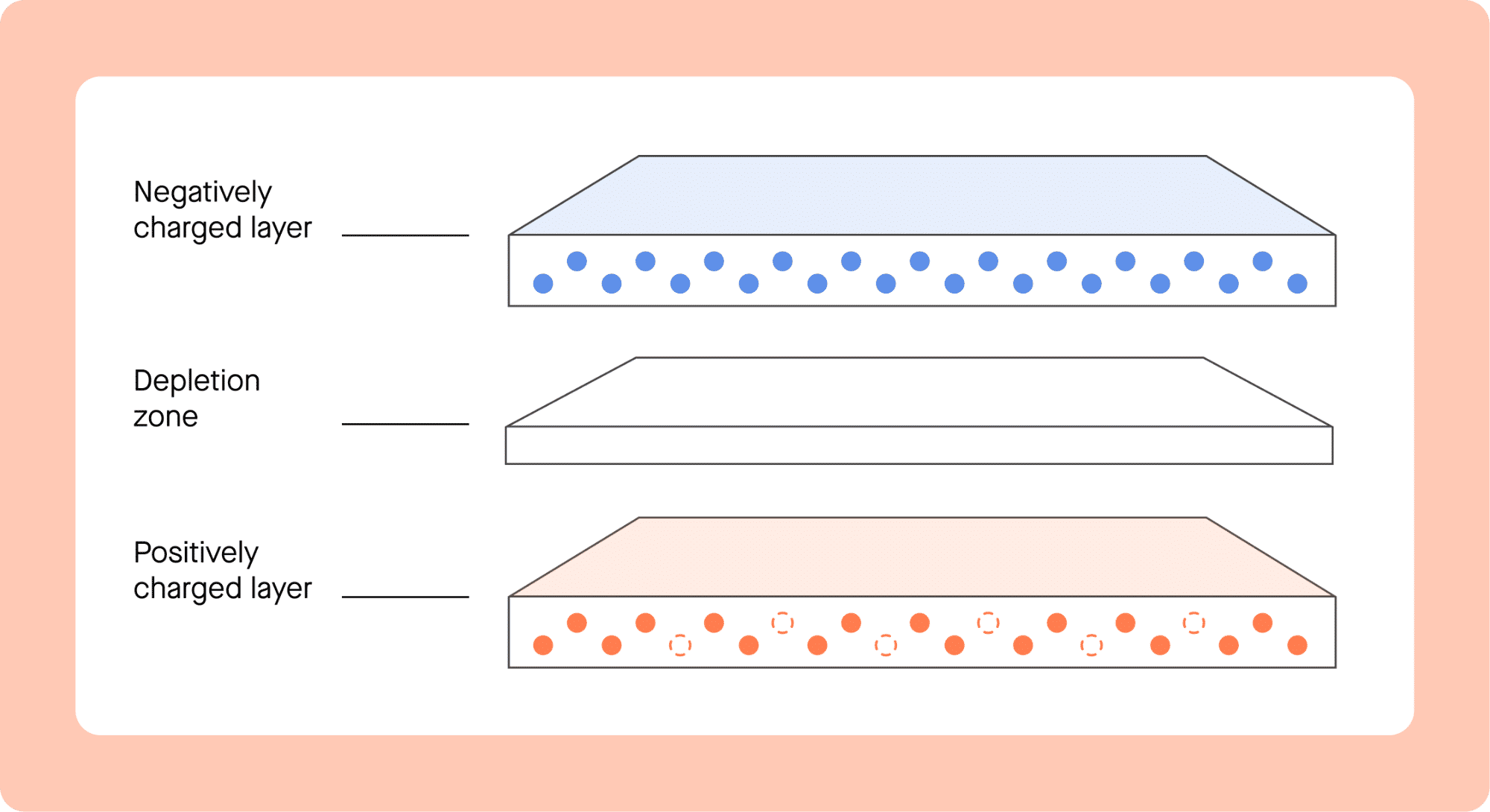
Solar panels contain photovoltaic cells, typically these are made out of silicone and sit between layers of semiconducting materials.
One layer of silicone is negatively charged, while the other is positively charged, which results in the formation of an electric field - this enables the formation of an electric current i.e. electricity.
Step 2 - Sunlight Hits the Photovoltaic Cells
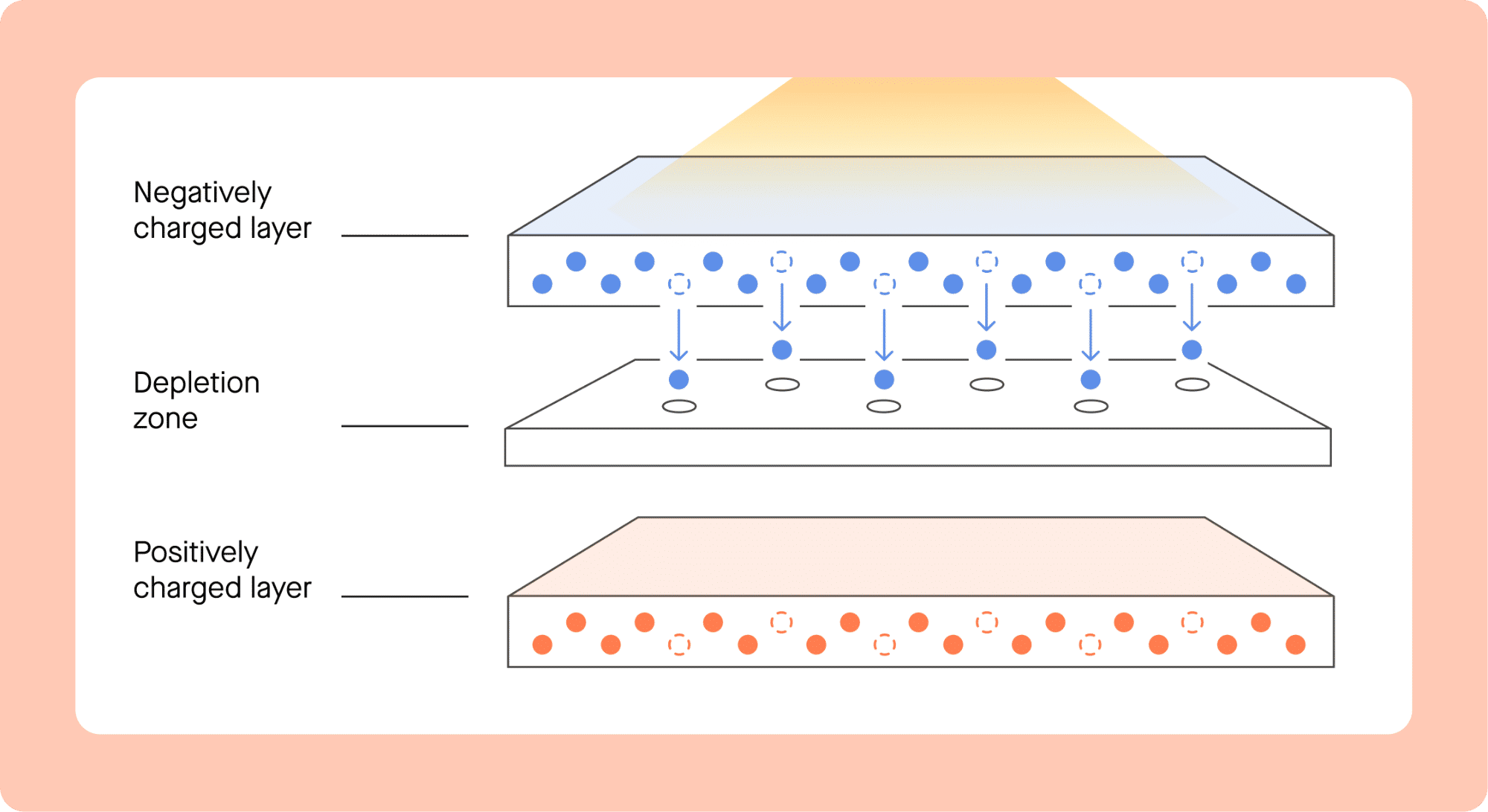
When sunlight strikes the photovoltaic cells it results in electrons (photoelectrons) being released from their bonds within the silicone, this is referred to as the 'photoelectric effect'.
This absorbed energy excites electrons in the silicon cells, causing them to break free from their atoms. The silicon cells are designed with a positive and a negative layer to create an electric field that guides these free electrons in a particular direction.
Step 3 - Electrons Are Attracted to the Positively Charged Layer
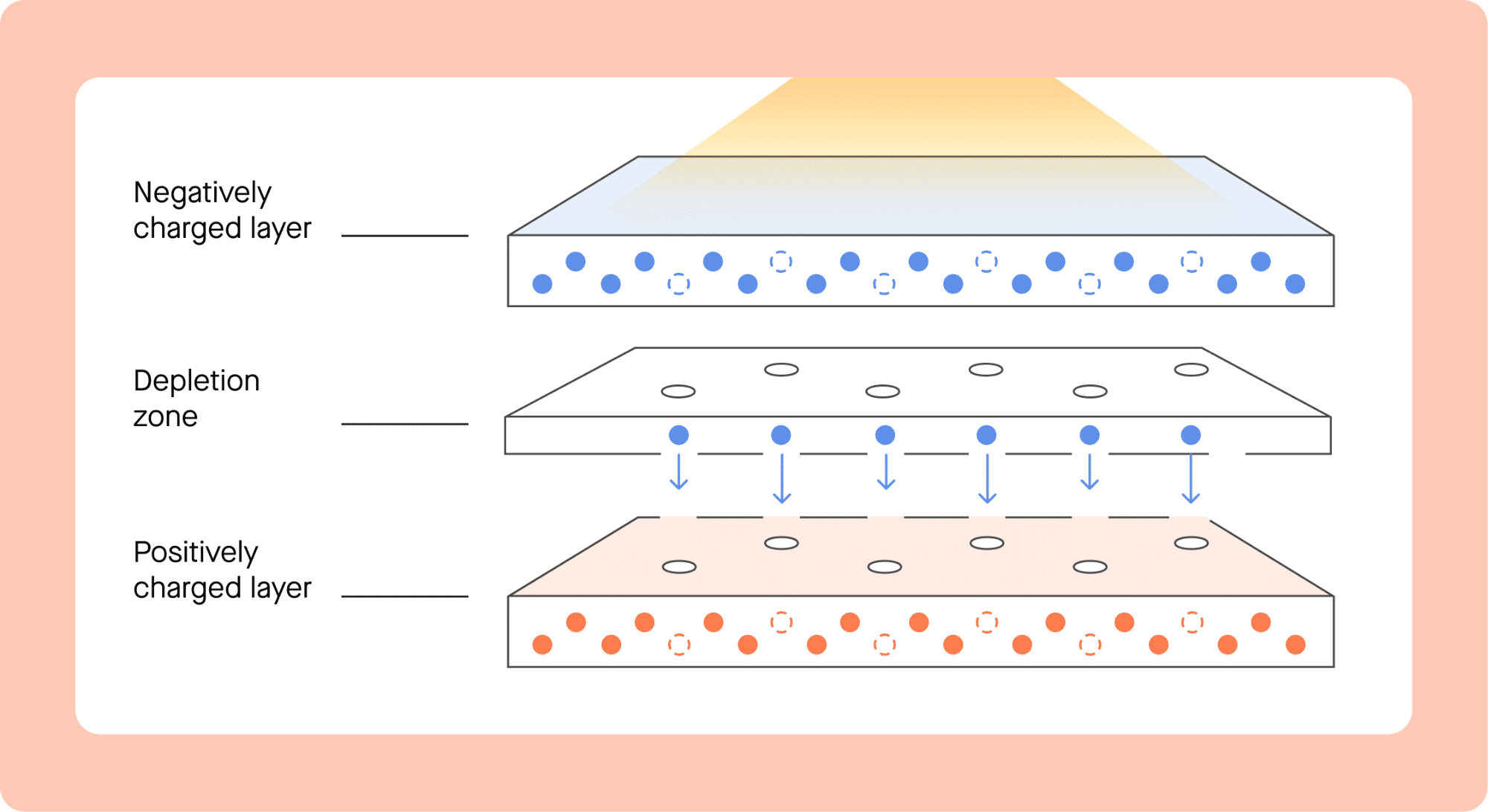
The free electrons are then attracted to the positively charged silicone layer, specifically to the positively charged holes (which are vacancies due to the lack of valence electrons).
However, the 'junction' or ‘depletion zone ’ only enables the electrons to flow in one direction - from the positive to negative silicone layer.
Explore a Solar Case Study: Check out an insightful Q&A session featured in one of our detailed case studies on domestic solar panels. Hear directly from a Heatable customer in the UK and gain valuable perspectives on their experience here.

The image above shows a 23-panel solar installation, carried out by the MCS-certified solar team at Heatable, featuring the REA Fusion2 solar panels.
Step 4 - Electrons Return to the Negative Layer via An Electric Wire
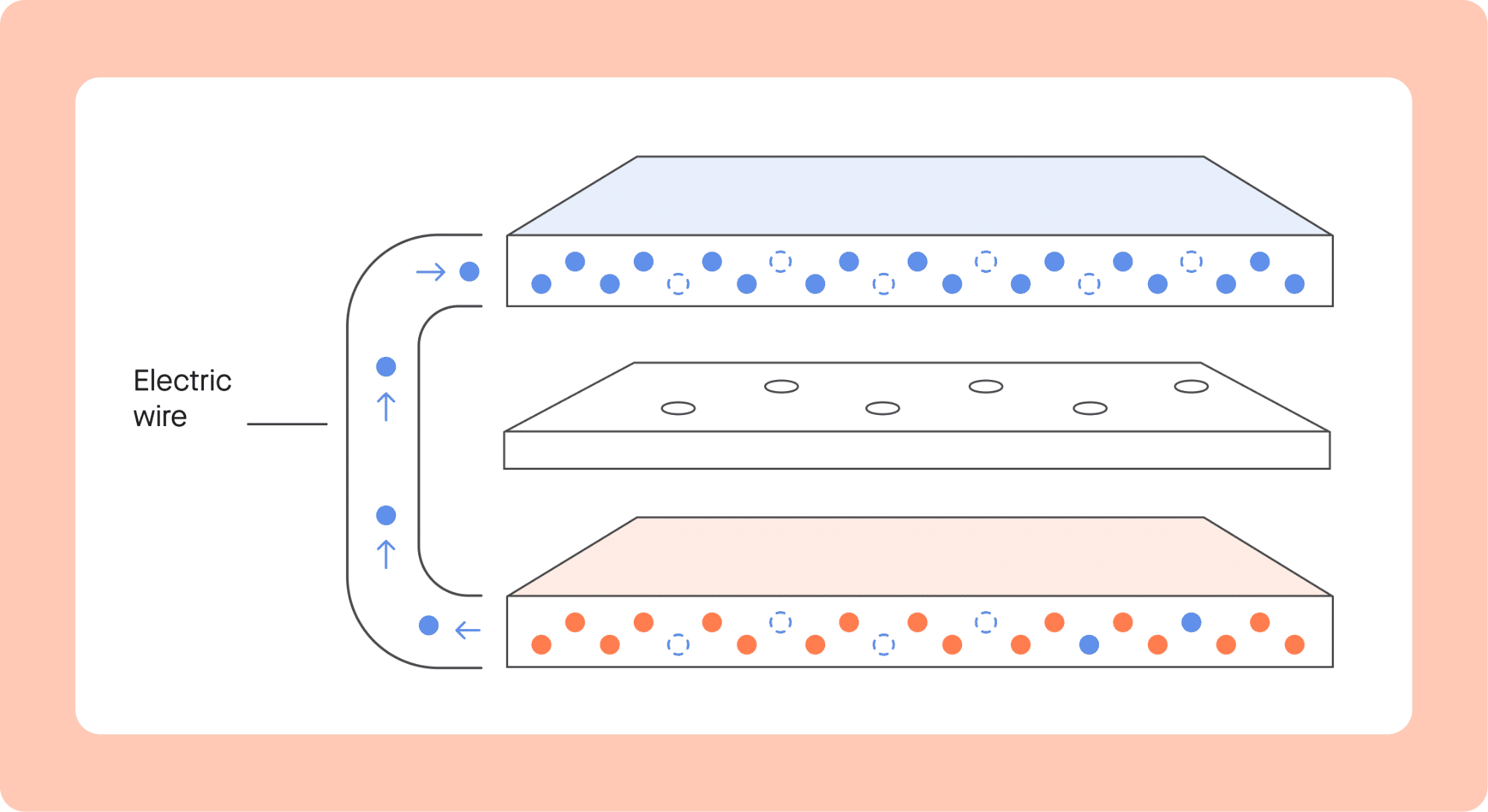
The movement of free electrons towards the positive layer creates an electric current. This current is collected by conductive wires attached to the silicon cells, forming a flow of electricity.
Step 5 - Electrons are Conducted
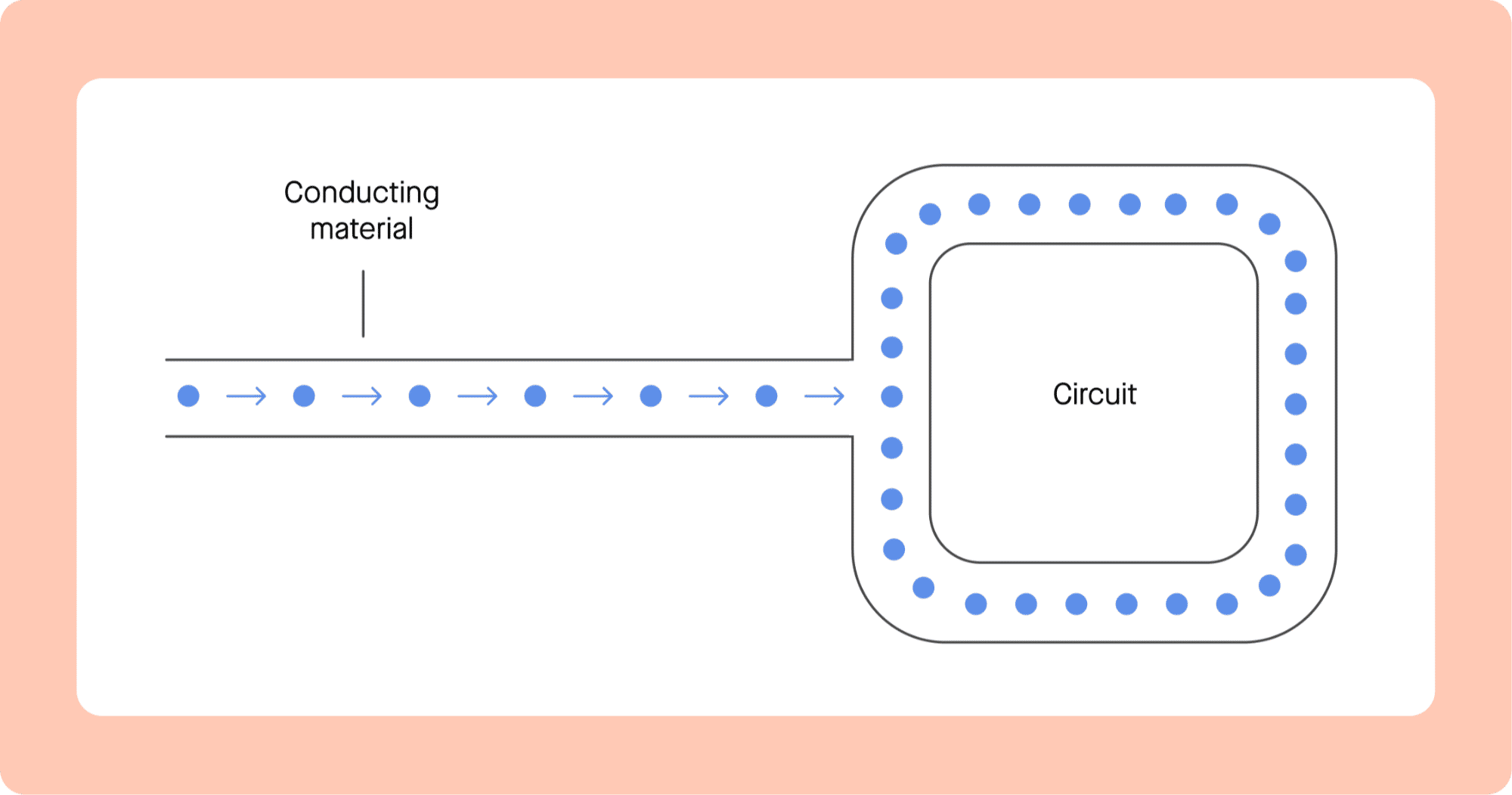
The movement of electrons towards the negative side and holes towards the positive type side creates a flow of electric current when an external circuit is connected to the solar cell.
This flow of electrons through the external circuit is the electrical power that can be used to do work, like powering your home or charging a battery.
Step 6 - Electricity is Converted from AC to DC

The electricity generated flows to an inverter that converts the direct current (DC) generated by the panels into usable alternating current (AC).
AC is the type of electrical current household appliances and the National Grid use.
Step 7 - Alternating Current (AC) is Ready to Be Used
The final step is the entire goal of solar panels - the production of free, clean and renewable energy in the form of AC electricity.
This electricity can then be used by our household appliances, stored in a solar battery for later use or sold directly to the National Grid using the Smart Export Guarantee (SEG).
Related solar guides:
Next Steps For Your Solar Journey:
When planning to install solar panels for your home, there are several important factors to consider. Make sure to refer to the following guides to help you make informed decisions:
To dive deeper into these topics, head over to our advice section, check out our YouTube channel for informative videos, or read a customer case study to see how others have benefited from their solar installation.
Get a Quote for Solar Today
Without boasting you should get your solar installed with us, here's why:
Thousands of Happy Customers: We boast an average score of 4.9 on Trustpilot, outperforming the market leader.
Which? Trusted Trader: Heatable is proudly recognised as a Which? Trusted Trader.
MCS Accredited: Our accreditation by the Microgeneration Certification Scheme (MCS) ensures high-quality standards.
Exclusive Panels: We offer REA Fusion solar panels, available only through Heatable.
Consumer Protection: As members of the HIES consumer code, we provide 2-year deposit protection.
Flexible Payment Options: Choose from multiple payment methods, including finance options.
Fixed Price Guarantee: Enjoy transparency with no hidden costs.
Save Your Quote: You can save your quote and decide later.
Bespoke Design Tool: Draw your own conclusion (literally) on whether solar is worth it for you, here.






